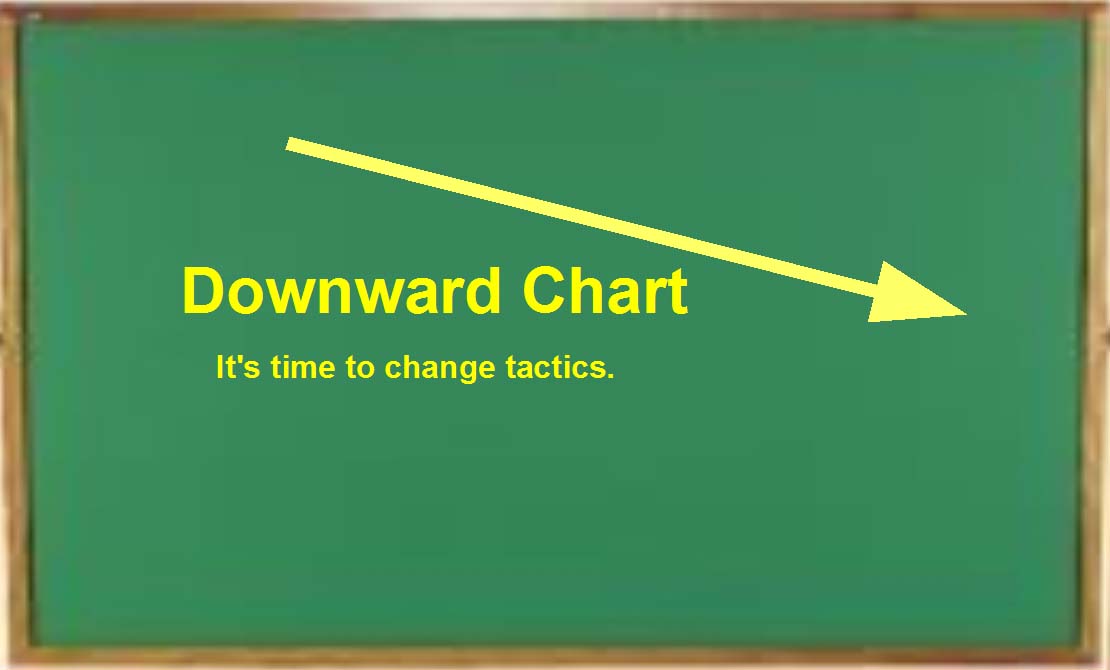Ed's
AV Handbook
Batting practice for the AV Professional
and primer for the novice
Chapter
10 Page 4
AV Business & Marketing
Assess & adjust
continued
The
Micro Audit
The micro audit is a statistical exam of the fundamentals that drive the P&L and the Balance Sheet. The data includes
the number of completed promotions, generated leads, presentations, closes, $ales, batting average, and dollars per close.
The micro audit begins with The To-Do List.
The 'To-Do List' and the stat counts
Initiate the stat exam with the assistance of a daily To-Do List that includes:
a. People to call.
b. Projects to address.
Prioritize the list.
The micro audit is a statistical exam of the fundamentals that drive the P&L and the Balance Sheet. The data includes
the number of completed promotions, generated leads, presentations, closes, $ales, batting average, and dollars per close.
The micro audit begins with The To-Do List.
The 'To-Do List' and the stat counts
Initiate the stat exam with the assistance of a daily To-Do List that includes:
a. People to call.
b. Projects to address.
Prioritize the list.
Add the following
five statistical abbreviations
at the bottom of the list.
Return to execute the 1st item on the list. Continue to the next until completed.
In addition, add and calculate the following two stats.
Convert the 7 stat results to points on a line chart -- one chart for each stat. Over several periods the charts develop into a dashboard that illustrate each stat's history and condition. A chart’s slope or direction is also a predictor of the future.
The following are the prescribed plans of action for a chart's direction.
1. If a Chart's direction is at a steep skyward inclination:
- Keep doing what you’re doing.
- Do not change anything.

2. If a Chart’s direction is less than skyward but still upward:
- Look at the tactical areas that affect that chart.
- Keep doing what works and do more of that.
- Do not make any drastic changes.

3. If a Chart’s direction is flat:
- Look at the tactical areas that affect that chart.
- Do more of what works.
- Eliminate what does not work.

4. If a charts direction has a downward slope:
- Reevaluate each tactical area of the market plan that affects that stat.
It is time to change tactics.

5. If the direction of a Chart is dropping as a dive-bomber:
- Parachute out. Change your strategy and or tactics.

Return to execute the 1st item on the list. Continue to the next until completed.
- P = Promotions completed (customer phone calls emails & letters, advertising, events, etc.)
- L = Leads produced
- Pr = Presentations made
- C = Closed sale
- $ = Sales amount
- Run an ad, make a mark under P.
- Place a customer phone call, make a mark under P.
- Send a thank you letter,
make a mark under P.
- Get a lead, make a mark
under L.
- Make a presentation, make a
mark under Pr.
- Close a sale, make a mark
under C
- And note $ales amounts under $.
In addition, add and calculate the following two stats.
- Batting Average (closes ÷ presentations)
- Dollars per Close ($ales ÷ closes)
Convert the 7 stat results to points on a line chart -- one chart for each stat. Over several periods the charts develop into a dashboard that illustrate each stat's history and condition. A chart’s slope or direction is also a predictor of the future.
- Promotion - its direction predicts leads.
- Leads - their direction predicts presentations.
- Presentations - their direction predicts opportunities to close.
- Batting Average - its direction predicts closes.
- Closes - its direction predicts sales.
- Dollars per Close - its direction predicts sales productivity
- Sales - its direction predicts the direction of the P&L and the Balance Sheet.
The following are the prescribed plans of action for a chart's direction.
1. If a Chart's direction is at a steep skyward inclination:
- Keep doing what you’re doing.
- Do not change anything.

2. If a Chart’s direction is less than skyward but still upward:
- Look at the tactical areas that affect that chart.
- Keep doing what works and do more of that.
- Do not make any drastic changes.

3. If a Chart’s direction is flat:
- Look at the tactical areas that affect that chart.
- Do more of what works.
- Eliminate what does not work.

4. If a charts direction has a downward slope:
- Reevaluate each tactical area of the market plan that affects that stat.
It is time to change tactics.

5. If the direction of a Chart is dropping as a dive-bomber:
- Parachute out. Change your strategy and or tactics.

Ed's AV Handbook
Copyright 2007 Txu1-598-288 Revised 2025
Sponsored By

Architectural Speaker Tuning System
for
in-wall/ceiling custom installed speakers.
Reclaim
The Performance You Paid For
Site Menu
Home
Table of
Contents
Handbook Chapters
1 AV
Terms
2 AV Physics
3 Sound Reproduction
4 Video Reproduction
5 The AV System Sequence
6 The Room, Speaker, & TV
7 Acoustical Strategy - Small Room
8 Home Theater by Design
9 AV Sales Training
10 AV Business & Marketing
Contact
About